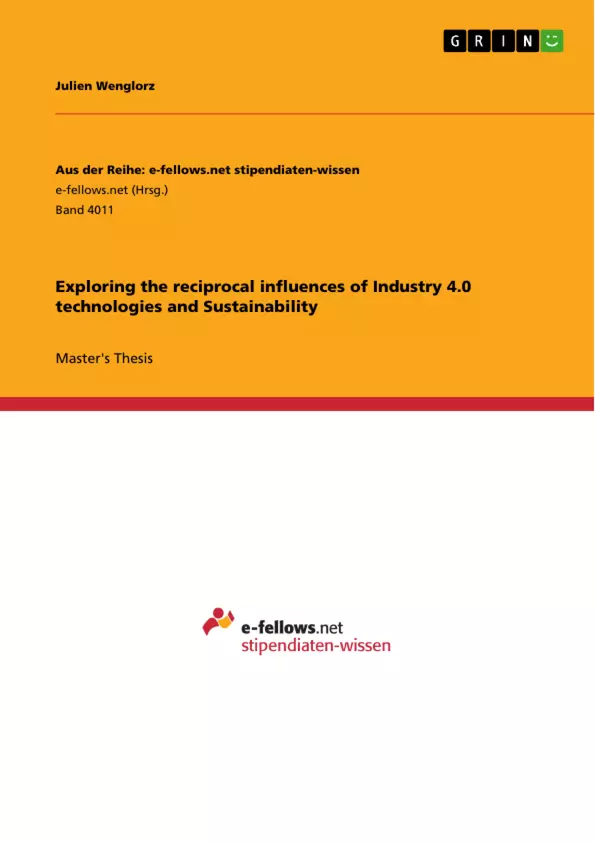This research explores the reciprocal influences of Industry 4.0 technologies and sustainability based on a systematic literature review to gain knowledge on how to manage the transition towards a more sustainable industrial value creation efficiently and effectively. Quantitative and qualitative analyses based on 120 investigated papers were performed, showing increasing research activity within the field, with a slight tendency towards empirical research and manufacturing focus. Sustainability issues are main drivers for both scientific investigation and the increasing demand for industrial changes, while Industry 4.0 technologies are considered to be suitable solutions to tackle emerging sustainability challenges on each sustainability dimension.
Inhaltsverzeichnis (Table of Contents)
- Abstract
- Acknowledgement
- Introduction
- Literature Review
- Sustainability
- Industry 4.0
- Sustainable industrial value creation
- Need for research
- Methodology
- Research Design
- Data Collection
- Data analysis
- Results & discussion
- Descriptive statistics
- Quantitative analyses
- Qualitative analyses
- Limitations, Future Research and Conclusion
- Limitations
- Future Research
- Conclusion
- References
- Full Bibliography of 120 included papers
- Appendices
Zielsetzung und Themenschwerpunkte (Objectives and Key Themes)
This systematic literature review aims to comprehensively investigate the reciprocal influences of Industry 4.0 technologies and sustainability. It seeks to provide a current overview of the research field, highlighting key insights, ongoing research directions, and research gaps. The review addresses the following research questions:
- What is the current status of research investigating the relation between Industry 4.0 and sustainability?
- To what extent do Industry 4.0 technologies and sustainability dimensions influence each other?
The review also explores the potential of Industry 4.0 technologies to contribute to a more sustainable industrial value creation. It examines the relationship between Industry 4.0 and sustainability in relation to the United Nations' Sustainable Development Goals (SDGs).
Zusammenfassung der Kapitel (Chapter Summaries)
The introduction highlights the urgency of incorporating sustainability into business decision-making processes, particularly within the industrial sector. It presents Industry 4.0 as a potential driver for sustainable value creation and outlines the research gaps in understanding the actual relationship between Industry 4.0 technologies and sustainability.
The methodology chapter details the research design, data collection, and data analysis processes employed in the systematic literature review. This chapter provides a comprehensive overview of the research methods used to gather and analyze the information used in the study.
The results and discussion chapter presents the findings of the systematic literature review, exploring descriptive statistics, quantitative analyses, and qualitative analyses. This chapter provides insights into the current state of research and the key relationships identified between Industry 4.0 and sustainability.
Schlüsselwörter (Keywords)
The key terms and focus topics of this systematic literature review include Industry 4.0, sustainable industrial value creation, sustainability, and systematic literature review. The research examines the relationship between these concepts, exploring the potential of Industry 4.0 technologies to address sustainability challenges and promote a more sustainable future.
- Arbeit zitieren
- Julien Wenglorz (Autor:in), 2021, Exploring the reciprocal influences of Industry 4.0 technologies and Sustainability, München, GRIN Verlag, https://www.grin.com/document/1040951



